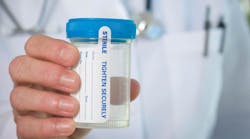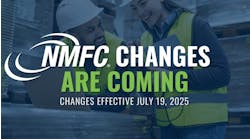The Federal Motor Carrier Safety Administration (FMCSA) reported in late February that nearly 8,000 drug and alcohol violations have been identified since the new Drug and Alcohol Clearinghouse went live just after the first of 2020.
The clearinghouse only contains violations reported on and after Jan. 6, 2020. Therefore, the number of substance abuse violations uncovered in just six weeks suggests that the clearinghouse is meeting its intended purpose of helping to protect highway safety. That’s something every motor carrier and professional driver should welcome.
At the same time, every motor carrier and professional driver should be asking, “Am I up to speed on drug and alcohol testing?” The clearinghouse is only the start of changes and developments in the FMCSA drug and alcohol testing program, but let’s start by reviewing what the clearinghouse requires.
Are you registered with the clearinghouse?
As of Jan. 6, 2020, all motor carriers, both interstate and intrastate, who employ commercial driver’s license (CDL) holders must register with the clearinghouse. This is in addition to all consortia/third party administrators (C/TPAs) who administer drug testing for motor carriers and owner-operators, all medical review officers (MROs), and all substance abuse professionals (SAPs).
Some CDL drivers may not need to register, if their current employer is only conducting a “limited” query of the clearinghouse database to see if there is anything amiss. In that case, the driver need only give the motor carrier written permission to do the database search. But a driver must electronically register with the clearinghouse itself, if applying for a new driving position, where a “full” query will be conducted, or if the current employer finds a violation record and needs details.
Even if a driver is not required to register for the clearinghouse, it is highly recommended that all CDL drivers register. Registration allows the driver to view and, if necessary, challenge information on file with the clearinghouse. Registration also allows the driver to tell the clearinghouse how to contact the driver with any changes to their record. Absent driver instructions, the clearinghouse will use “snail mail” to the address associated with the driver’s CDL.
As of Feb. 21, FMCSA says 650,000 entities have registered with the clearinghouse – a good start, but there are many more carriers and drivers to go.
Are you testing, reporting to and checking the clearinghouse?
Motor carriers, C/TPAs, MROs and SAPs must report drug and alcohol testing violations and refusals to test to the clearinghouse. Motor carriers are required to conduct pre-employment testing for all potential new hires (as well as random, reasonable suspicion and post-accident tests of current drivers). They must also query the clearinghouse database for past driver applicant violations which have not been remedied through a successful return-to-duty process, as reported to the clearinghouse by an SAP. Motor carriers are also required to check the clearinghouse database once annually for current employed drivers.
Are you following recent developments in drug and alcohol testing?
FMCSA has just increased the random drug test rate, in part because of the spreading legalization of medical and recreational marijuana. So, by random test rate alone, it is more likely a truck driver will be tested. Plus, FMCSA has urged caution in the use of CBD oil and similar products. Last, but not least, drug test procedures themselves may be expanded in the near future.
It is illegal and clearly unsafe for a truck driver with unresolved drug and alcohol violations to be on the road. The FMCSA Drug and Alcohol Clearinghouse is bringing those violations to light, while new developments are strengthening testing itself.



